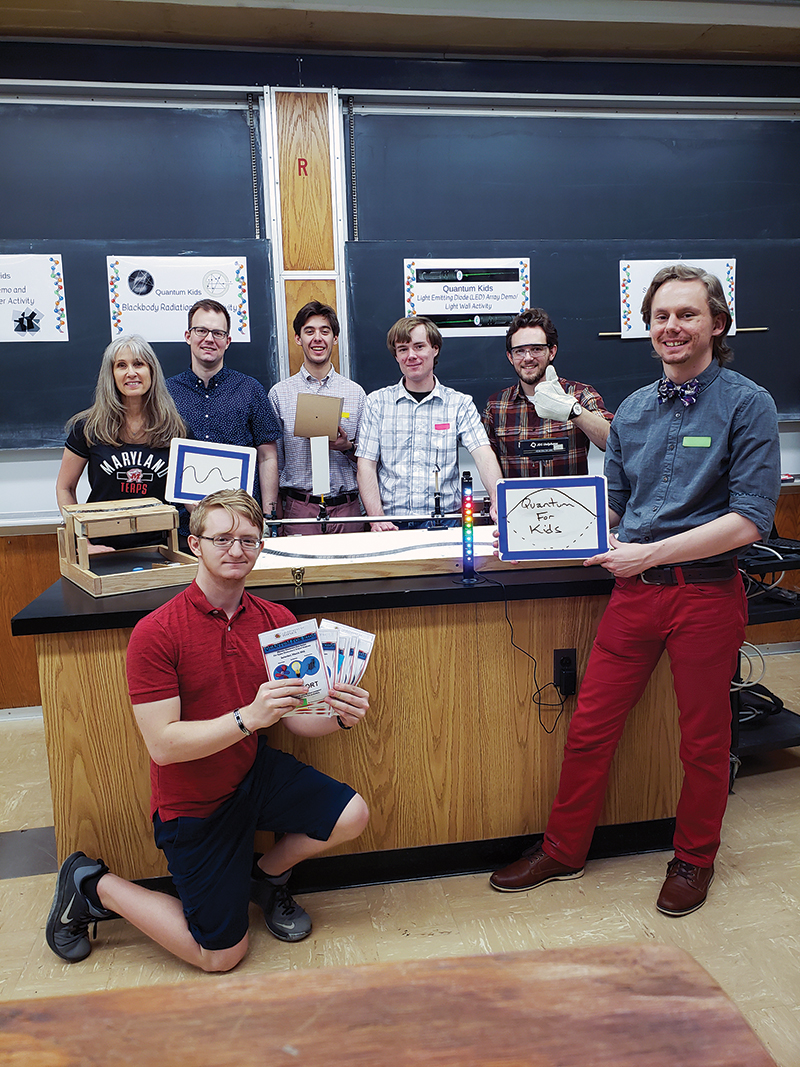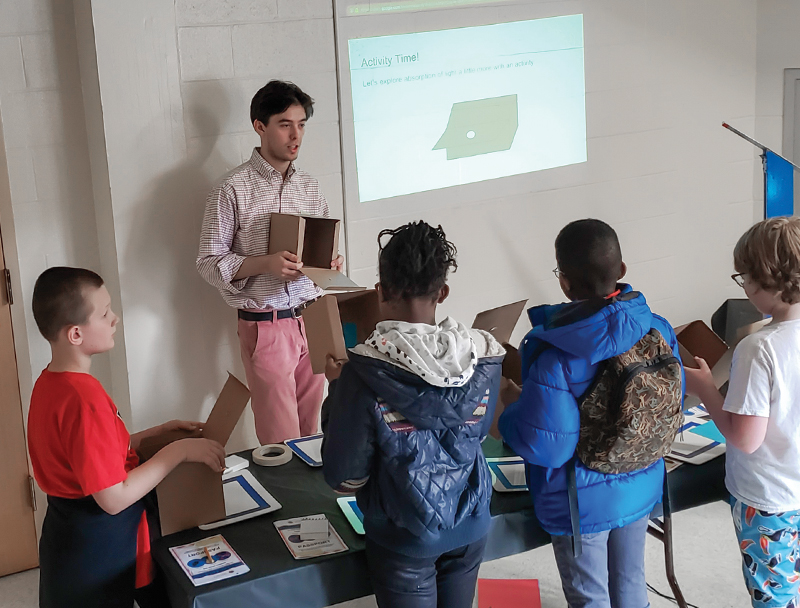Quantum Kids: You Got This!
Quantum Kids: You Got This!
2018–19 Marsh White Award
Project Lead: Tyler B. McDonnell
Project Advisor: Donna Hammer
Project Summary: The University of Maryland SPS chapter received the Marsh W. White Award from SPS National to design a program of activities focusing on quantum concepts for elementary school students that introduces them to the world of quantum through diverse learning experiences.

Quantum physics for kids? Absolutely! Our outreach program, designed for elementary school students, proved that physics can be accessible to young learners. The program focused on the quantum concepts of wave–particle duality, quantization of energy, energy levels, and interacting particles. Each concept had a station designed to engage the students’ interest and provoke thought. During the program, students also had access to a quantum library with books covering these and other concepts.
The two 2-hour sessions we hosted began with a discussion on the scope of the program, everyday quantum technologies, current national focus on quantum education, and current research being conducted at the University of Maryland. Afterward, students were given passports containing questions and fill-in-the-blank responses, allowing them to track their progress through the program. The students rotated through four stations: the double-slit experiment, blackbody radiation, LEDs and energy levels, and superconductivity.
At the double-slit experiment station, focused on wave–particle duality, students observed laser light through a double slit, single slit, and their own constructed pinhole apertures to investigate the diffracted light pattern created. Afterward, they were shown the double-slit effect with photon particles creating the same pattern. These guided students to observe and think about how peculiar the quantum world can be in comparison to our everyday world.
Students stopping at the blackbody radiation station learned about Max Planck’s discovery and how energy is considered quantized, and then built their own blackbodies from shoe boxes and colored paper to investigate the concept through critical thinking and discussion. At the superconductivity station, students were shown a superconducting track demo and engaged in Q&A on how the superconducting puck was able to float across the entire track, examining a different way that particles can interact.
To understand the concept of energy levels, students discussed the color spectrum and were given colored LEDs to see which LED color allowed them to write their name the fastest. They then learned how a forward-bias p-n junction operates and how the amount of energy released in light is dependent on the energy gap. They were then taught that a reversed LED is the basis for a solar cell.
The quantum library station was available during the program for students who wished to learn more than what the program offered or wanted the option of learning the material in their own way. Parents also enjoyed the quantum library as they waited for their children to complete the program! The books provided parents with knowledge that enabled them to discuss the scientific concepts with their children after the program ended.
This outreach event exposed students to quantum physical concepts while also highlighting everyday technologies that make use of quantum physics. Students became more intrigued after participating in hands-on activities and completing their passports. We are energized by the feedback we received from families and will refine our efforts to help young students build a foundation to learn modern physics.

To learn more about this project, visit spsnational.org/awards/marsh-w-white-outreach-award/2019/university-maryland-college-park.
